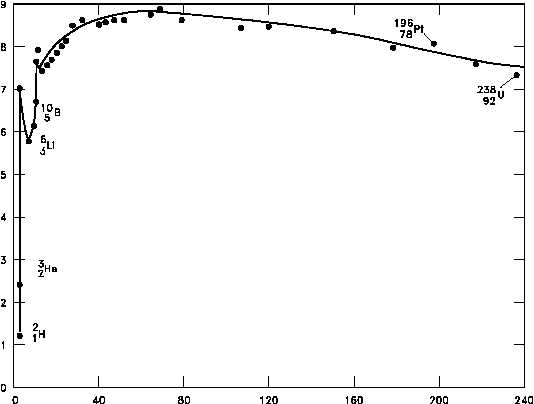Atomic and Nuclear Physics
DOE-HDBK-1019/1-93
NUCLEAR FISSION
Binding Energy Per Nucleon (BE/A)
As the number of particles in a nucleus increases, the total binding energy also increases. The
rate of increase, however, is not uniform. This lack of uniformity results in a variation in the
amount of binding energy associated with each nucleon within the nucleus. This variation in the
binding energy per nucleon (BE/A) is easily seen when the average BE/A is plotted versus atomic
mass number (A), as shown in Figure 20.
Figure 20 Binding Energy per Nucleon vs. Mass Number
Figure 20 illustrates that as the atomic mass number increases, the binding energy per nucleon
decreases for A > 60. The BE/A curve reaches a maximum value of 8.79 MeV at A = 56 and
decreases to about 7.6 MeV for A = 238. The general shape of the BE/A curve can be explained
using the general properties of nuclear forces. The nucleus is held together by very short-range
attractive forces that exist between nucleons. On the other hand, the nucleus is being forced apart
by long range repulsive electrostatic (coulomb) forces that exist between all the protons in the
nucleus.
Rev. 0
Page 53
NP-01


